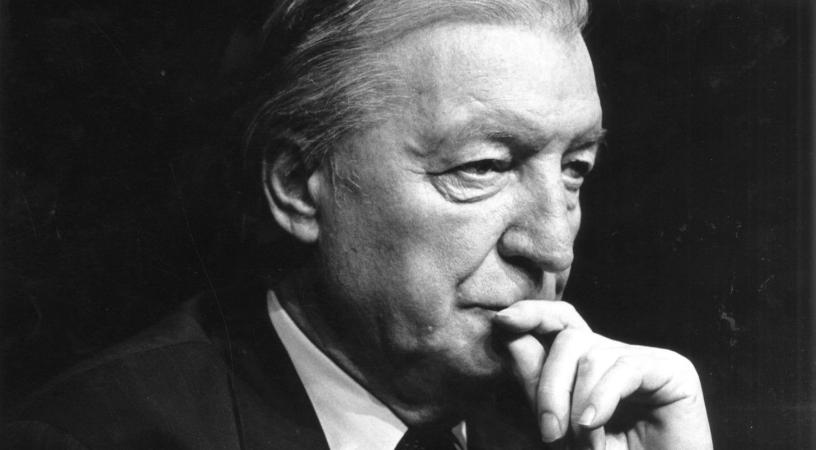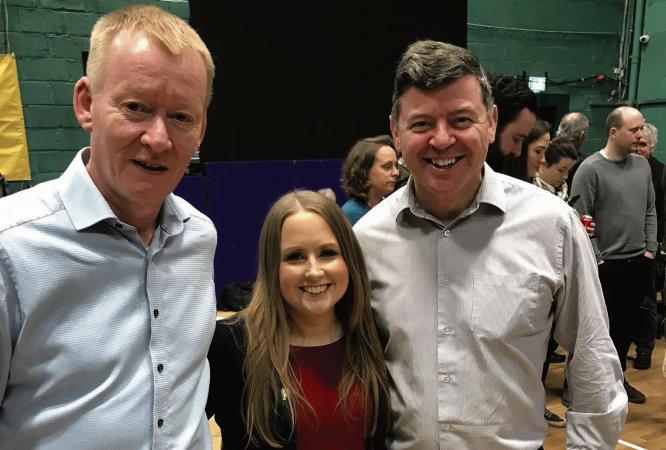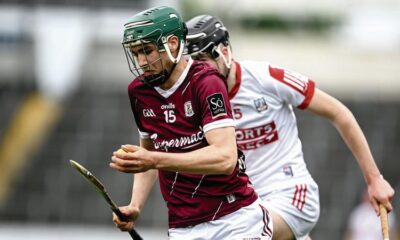Political World
Labour’s by-election disaster is a sign of tough times still to come

Political World with Harry McGee – harrymcgee@gmail.com
There are lies, damn lies and by-elections – and in many ways, by- elections tell you very little about things that are to come. But conversely, they can be useful weathervanes for the storms that lie ahead.
Like most other by-elections held since the foundation of the State, the Meath East by-election had its own peculiar circumstances.
A sitting TD had died. Shane McEntee was very well liked because, in essence, he was a very likeable guy: friendly, emotional and decent. Plus, it was especially sad and poignant, given that he, a relatively young man, had taken his own life.
There was always going to be a strong sympathy factor.
Meath, despite all the changes that have taken place there in a generation, is still an innately traditional county.
Sure, it’s a vastly different place to the Meath that my mother and her siblings grew up in well over half a century ago. They lived in a small village called Ballivor and some of the family and relatives lived in equally small villages closer to Dublin like Ashbourne and Ratoath.
Now Ashbourne and Ratoath are large towns, satellite downs for parents who are whizzing down the 20 kilometres of motorway that separates them from Dublin. Even Ballivor (almost an hour away from the capital) has a fair sprinkling of long-distance commuters.
In fact, the M1, M2, M3 and M4 motorways have made most of the county accessible for commutes. The radio ad that once said “Navan, only an hour from Dublin” is now obsolete. On the multi-laned speedways, it’s 45 minutes tops.
Many of those parents are Dubliners themselves. And in every of the vast housing estates we visited as we followed by-election candidates, we experienced the problems that have become common since the crash of late 2008: negative equity; unemployment and slashes in pay cuts for the many public sector employees who have made Co Meath their home.
Yet, still, despite that, Helen McEntee of Fine Gael got 38 per cent of the vote. It’s very difficult to analyse how every component of her vote was made up. Fine Gael spinners were twirling the tops furiously from mid Thursday afternoon claiming it was all down to her excellence as a candidate and voter approval for Government policies despite the headwinds of the property tax letters arriving into people’s doorsteps.
She was a good candidate in her own right; not just an indolent son or daughter trading on a late father’s name. And sure, a percentage of the Fine Gael vote would have reflected core supporters and others who approved of their policies. But my own view is that the sympathy factor was the dominant one. In other words, if Fine Gael had run a really good candidate who wasn’t a McEntee (Mairéad McGuinness for example) I don’t think they would have won the by-election.
And if you accept that the sympathy factor (people voting out of respect for her father) it leads to an interesting paradox. Everybody, including all us in the commentariat, had neatly split the constituency of Meath East into two: the more traditional and rural North and the vast commuterville that was the south.
For more, read this week’s Connacht Tribune.
Connacht Tribune
The fine art of good timing when it comes to elections

World of Politics with Harry McGee
Academically, politics is described as a science. But in the real world, it’s more of an art – and one of the big decisions a Government has to make is to decide when to call an election.
Will they see out the full term, or will they go early – either to mitigate the damage they will ship, or to secure a victory before things go awry, or the economy takes a dip, or some kind of controversy erupts?
Timing is everything.
And there’s a bit of art to that – not to mention a lot of luck. If you call it early and win big, you’re a genius. If you call it early and lose, you are the political version of the village fool.
Charlie Haughey was a poor judge of the public mood. Twice he called snap elections and on both occasions they backfired. Haughey succeeded Jack Lynch as Taoiseach in late 1979 and did not – technically – have his own mandate. He tried to remedy that by calling an election in 1981. But it recoiled. Ray MacSharry warned him not to hold it during the H Block hunger strikes when republican prisoners were dying each day. He did not listen to the advice and found himself out of office.
After his return to power in 1987, Haughey tired of presiding over a minority government that kept on losing votes in the Oireachtas (the opposition won nine private members motions).
So he called a snap general election and it backfired. Fianna Fáil lost seats and had to broker a coalition deal with the Progressive Democrats and his long-standing political adversary Dessie O’Malley.
For more, read this week’s Connacht Tribune.
Connacht Tribune Digital Edition App
Download the Connacht Tribune Digital Edition App to access to Galway’s best-selling newspaper.
Click HERE to download it for iPhone and iPad from Apple’s App Store, or HERE to get the Android Version from Google Play.
Or purchase the Digital Edition for PC, Mac or Laptop from Pagesuite HERE.
Get the Connacht Tribune Live app
The Connacht Tribune Live app is the home of everything that is happening in Galway City and county. It’s completely FREE and features all the latest news, sport and information on what’s on in your area. Click HERE to download it for iPhone and iPad from Apple’s App Store, or HERE to get the Android Version from Google Play.
Connacht Tribune
Inch protest arguments are more subtle than Oughterard

World of Politics with Harry McGee
I was cycling down Mount Street in Dublin on Tuesday. It’s a wide esplanade that links the Grand Canal with Merrion Square. The street is a mixture of fine Georgian buildings and modern office blocks.
About half-way down is the office of the International Protection Office, which deals with asylum seekers who have arrived in the country.
Needless to say, the office has been overwhelmed in the past year. Besides an estimated 80,000 refugees who have arrived from Ukraine, there have been about 20,000 people from other parts of the world who have arrived into Dublin (mostly) claiming asylum.
The numbers peaked around Christmas, but they have been falling a little. In January, more than 1,300 people arrived seeking asylum but the numbers fell back to 831 and 858, in February and March respectively.
They are still huge numbers in a historical context.
So back to my cycle on Tuesday. I knew that some asylum seekers were camping outside the International Protection Office, but I was taken aback by how many. There were six tents lined up on the pavement directly outside. Then on the ramp that led down to the basement carpark on the side of the building, there were about another 20 tents.
It looked like what it was, a refugee camp in the middle of Dublin’s business district. If you pan out from Mount Street, you will find tents here and there in nearby streets and alleys. There were a good few tents in an alleyway off Sandwith Street about 500 metres away.
For more, read this week’s Connacht Tribune.
Connacht Tribune Digital Edition App
Download the Connacht Tribune Digital Edition App to access to Galway’s best-selling newspaper.
Click HERE to download it for iPhone and iPad from Apple’s App Store, or HERE to get the Android Version from Google Play.
Or purchase the Digital Edition for PC, Mac or Laptop from Pagesuite HERE.
Get the Connacht Tribune Live app
The Connacht Tribune Live app is the home of everything that is happening in Galway City and county. It’s completely FREE and features all the latest news, sport and information on what’s on in your area. Click HERE to download it for iPhone and iPad from Apple’s App Store, or HERE to get the Android Version from Google Play.
Connacht Tribune
Sinn Féin hunt for seats in ‘locals’ across Galway

World of Politics with Harry McGee
God that was a dramatic and historic weekend in England, wasn’t it? So much excitement, so much change, so much hype, so much out with the old and in with the new, and what looks like the coronation of a new leader. Yes, the local elections in Britain were something else weren’t they!
Apologies for not going on about King Charles III but the contract I signed when I became a lifelong republican forbids me to discuss the topic!
I know the British local elections sound a bit boring by comparison, but the results were stunning.
The Conservatives lost nearly 1,000 seats, the British Labour Party gained almost 500 and both the Lib Dems (with 350 gains) and the Greens (gaining over 200) also had amazing days at the polls.
It was Labour’s best day since 2002 but its victory was only partial. The Greens and the Lib Dems actually made gains at the expense of Labour in more affluent areas, and in parts of Britain where there were high numbers of graduates.
It was in the Red Wall constituencies in the North of England where the Labour recovery was strongest. These are working class constituencies with pockets of deprivation where people voted for the Labour Party forever. But all of those constituencies voted for Brexit and then voted for the Tories in the next general election. Labour is now winning back some of those votes.
Local elections are classified as second-tier elections which essentially means – from a national perspective – they are not life-or-death affairs, and not everything turns on them. Of course, it’s really important to have good local representation. But they are not an amazing weather vane for who rules the country.
For more, read this week’s Connacht Tribune.
Connacht Tribune Digital Edition App
Download the Connacht Tribune Digital Edition App to access to Galway’s best-selling newspaper.
Click HERE to download it for iPhone and iPad from Apple’s App Store, or HERE to get the Android Version from Google Play.
Or purchase the Digital Edition for PC, Mac or Laptop from Pagesuite HERE.
Get the Connacht Tribune Live app
The Connacht Tribune Live app is the home of everything that is happening in Galway City and county. It’s completely FREE and features all the latest news, sport and information on what’s on in your area. Click HERE to download it for iPhone and iPad from Apple’s App Store, or HERE to get the Android Version from Google Play.












